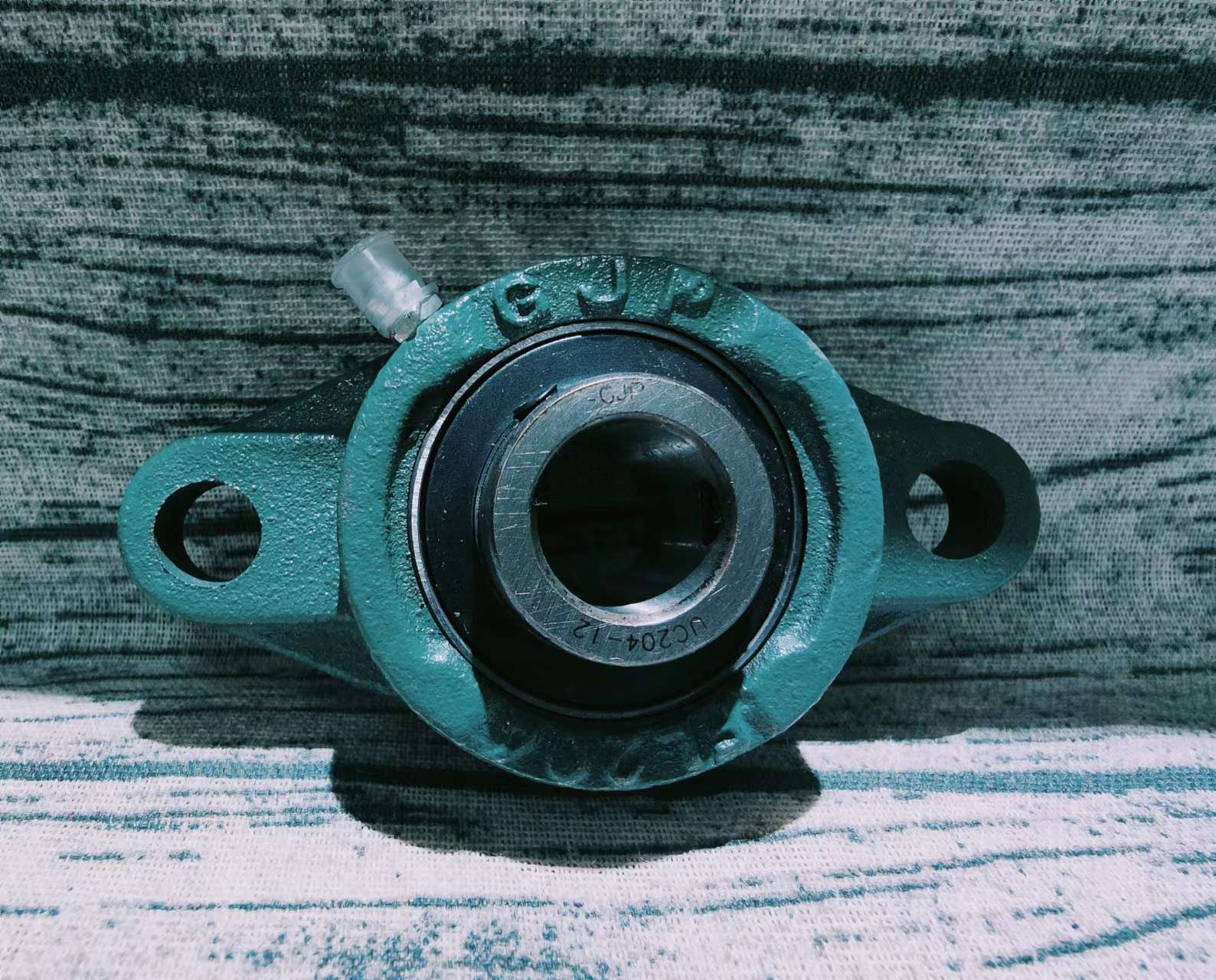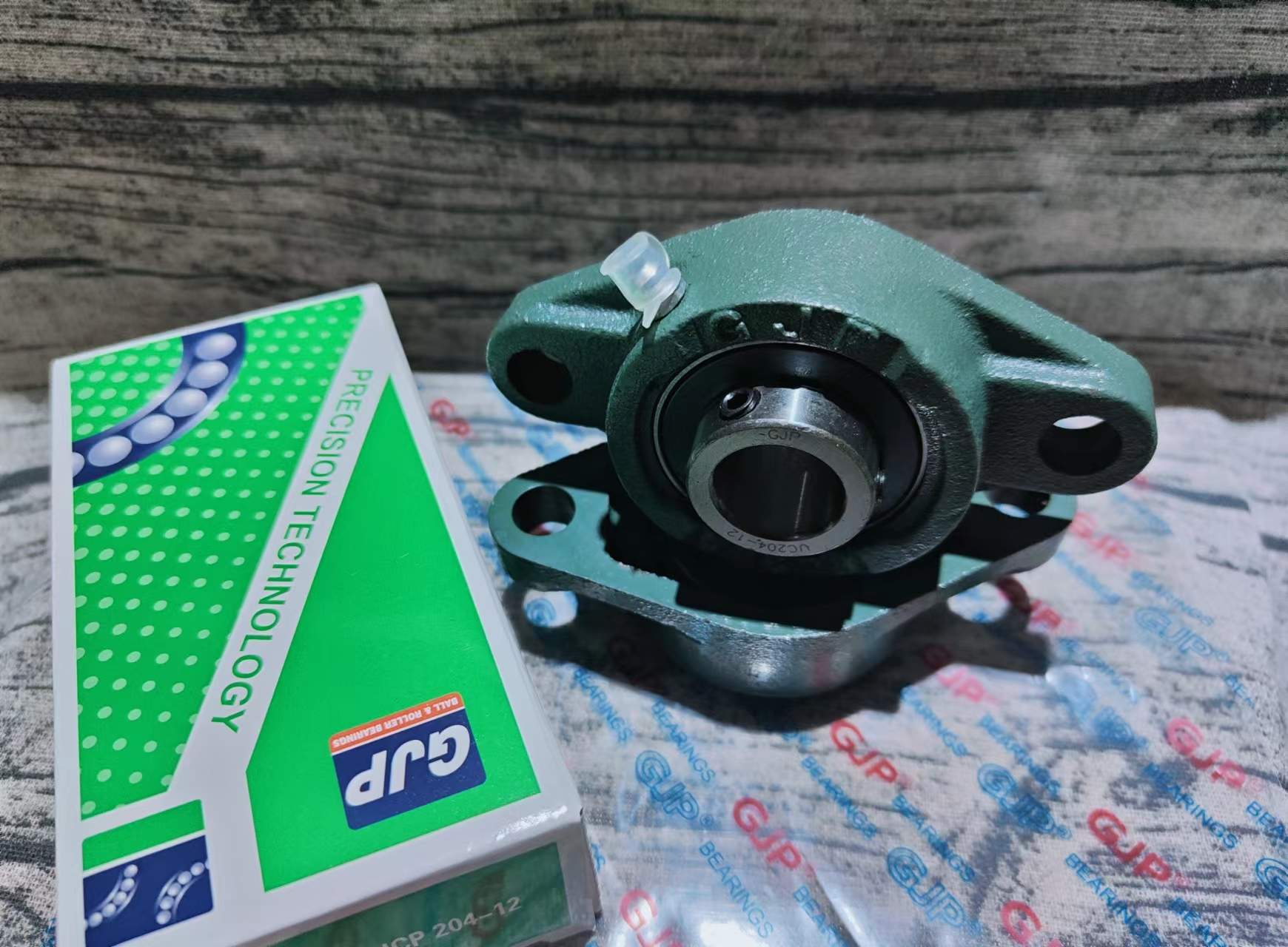pillow block bearings also known as block bearings or pedestal bearings, are mechanical elements used to support a rotating shaft. It usually consists of a bearing and a base that has a flat bottom and can be mounted on a frame, bracket or base of mechanical equipment.
pillow block bearings are designed for use in applications requiring support and positioning of rotating shafts, while also being able to bear the weight from the load on the shaft. This type of bearing is widely used in a variety of industrial equipment and machinery, such as conveyor belts, fans, pumping stations, agricultural machinery, etc.

Main Features of pillow block bearings
- Base Design: Bases usually have holes for mounting the bearings on the mechanical structure. The base design can be fixed or adjustable to allow adjustment of shaft positioning and alignment.
- Bearing Type: Pillow flange bearings can use various types of bearings such as ball bearings, roller bearings, etc., the specific choice depends on the requirements and loading conditions of the application.
- Sealing and Lubricating: Some pillow flange bearings are equipped with seals to prevent dust, contaminants, and moisture from entering the bearing interior. In addition, in order to ensure the normal operation of the bearing, it is necessary to carry out proper lubrication.
- Mounting and Maintenance: Mounting of pillow flange bearings is usually relatively simple, but proper alignment and mounting need to be ensured. Additionally, regular maintenance and lubrication are key to maintaining bearing performance.
Flange type for pillow block bearings
The flange type of pillow block bearings can vary according to their structure and application. The following are some common pillow flange bearing flange types:
- Square Flange: This is one of the most common types of pillow flanges, the base is square in shape, and there are usually tapped holes in the four corners of the flange to secure the bearings to the mechanical equipment.
- Round Flange: This type of pillow flange base has a round shape and is usually suitable for applications that require 360 degree rotation or require a larger support area.
- Diamond Flange: The shape of the diamond flange base is rhombus, this design can provide additional support and positioning options, suitable for some special application scenarios.
- Square through flange: The base shape of this flange type is also square, but it features a large hole in the center of the base through which the shaft can pass, and is suitable for situations where the shaft needs to pass through the center of the flange.
- Square Hole Flange: This type of flange usually has a square hole in the base for the shaft to pass through the bottom of the flange for support and positioning of the shaft.
- Oval flange: The base of the oval flange is oval in shape, which is suitable for some space-limited applications and can provide support in a limited space.
- Triangular Flange: The Triangular Flange Base has a triangular shape for some applications that require special support and positioning.
These different types of flange designs provide flexibility to suit different application requirements. The specific choice of which type of pillow block bearings depends on the design and work requirements of the equipment.

How pillow block bearings work
pillow block bearings work similarly to other bearing types, primarily by reducing friction and supporting shaft rotation. Below is a detailed explanation of the working principle of pillow block bearings:
- Rolling elements: pillow block bearings contain rolling elements inside, usually balls or rollers. These rolling elements are located between the inner and outer rings of the bearing and they roll between the shaft and the housing, reducing friction.
- Reduced friction: Compared with plain bearings, rolling elements can move between the inner and outer rings in a rolling manner, which reduces friction and energy loss. This allows the shaft to start with less force and maintain a smooth rotation.
- Load Support: One of the primary functions of pillow block bearings is to support the weight from the load on the shaft. When the shaft is subjected to vertical or radial loads, the rolling elements take up these loads and transfer them to the housing of the bearing. Seats are located at the bottom of the outer ring and distribute the load over the supporting structure, which supports the shaft load.
- Positioning and alignment: pillow block bearings can also provide a certain degree of shaft positioning and alignment. The design and structure of the seat can ensure that the shaft rotates in the correct position, thereby reducing deflection and vibration, and contributing to the stable operation of the mechanical system.
- Lubrication and Protection: To ensure smooth rolling between rolling elements and reduce wear, pillow block bearings require proper lubrication. Lubrication reduces friction, heat and wear, thereby extending the life of the bearing. Additionally, some bearings are equipped with seals to keep dust, contaminants and moisture out of the bearing interior.
In general, pillow block bearings realize the support and rotation of the shaft through the mechanisms of rolling element rolling, load support, positioning and neutralization, and lubrication. Such bearings are widely used in various industrial applications and provide important support for the stable operation of machinery and equipment.
Application of pillow block bearings
Pillow block bearings are used extensively in many different areas and applications. The following are some areas of application for pillow block bearings:
- Industrial equipment: pillow block bearings are commonly used in industrial equipment, such as conveyor belts, fans, compressors, generators, etc. They support and position rotating shafts to ensure proper functioning of equipment.
- Agricultural machinery: In the agricultural field, pillow block bearings are used in agricultural machinery such as tractors, harvesters, irrigation equipment, etc. They are capable of supporting moving parts of agricultural equipment such as rotors, drums, etc.
- Food processing: pillow block bearings are also used in the food processing industry for equipment such as agitators, blenders, and conveyor systems. These bearings require compliance with hygiene and cleanliness standards.
- Mining and Construction: In mining and construction, pillow block bearings are used in heavy equipment such as conveying equipment, excavators, crushers, etc. to support and stabilize moving parts.
- Medical Equipment: In medical equipment, such as X-ray machines, CT scanners, etc., pillow flange bearings may also be used to support rotating components and reduce mechanical noise.
- Automotive Industry: Although not as widely used in the automotive industry as some other bearing types, pillow flange bearings also find applications in certain automotive components, such as engine parts.
- Logistics and transportation: pillow block bearings can be used to support and transfer goods in logistics equipment, conveyor belts, airport baggage conveyor belts, etc.
- Energy industry: pillow block bearings are also used in the energy field, such as wind power generators, solar equipment, etc.
In conclusion, pillow block bearings are used in a wide range of applications, and they play a key support and positioning role in many different industries and equipment, ensuring the normal operation and efficient performance of mechanical equipment.
Related Products




